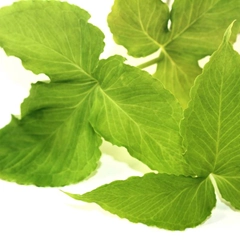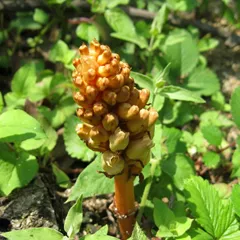Tubercular meningitis according to Chinese Medicine
The information provided here is not a replacement for a doctor. You shouldn't use it for the purpose of self-diagnosing or self-medicating but rather so you can have a more informed discussion with a professional TCM practitioner.
In Chinese Medicine, tubercular meningitis is sometimes associated with Wind-Phlegm, a so-called "patterns of disharmony". Chinese Medicine sees the body as a system, not a sum of isolated parts. A "pattern" is when the system's harmony is disrupted. It is not equivalent to the Western concept of "disease" because both concepts arise from totally different ways of seeing the human body.
To understand whether someone's tubercular meningitis might be caused by the pattern Wind-Phlegm, one needs to look for signs and symptoms associated with the pattern beyond what one might typically experience from tubercular meningitis alone. Indeed if tubercular meningitis is caused by Wind-Phlegm, patients also experience symptoms such as dizziness or vertigo, headaches, stifling sensation in the chest and nausea or vomiting. Similarly, patients with Wind-Phlegm typically exhibit slippery (Hua) or wiry (Xian) pulses as well as a tongue with thick white coating.
We've listed below a more detailed description of Wind-Phlegm so that you can have a better understanding of where tubercular meningitis might find its root according to Chinese Medicine.
Once identified, patterns are often treated using herbal formulas. Drinking herbal infusions is the most common remedy in Chinese Medicine, together with acupuncture. Here we detail below Ban Xia Bai Zhu Tian Ma Tang, a formula that can help treat Wind-Phlegm.
Wind-Phlegm, a "pattern of disharmony" associated with tubercular meningitis

Crow-Dipper Rhizomes (Ban Xia) is the key herb for Ban Xia Bai Zhu Tian Ma Tang, a formula used for Wind-Phlegm
Wind-Phlegm
Pulse type(s): Slippery (Hua), Wiry (Xian)
Tongue coating: Thick white coating
Recommended herbal formula: Ban Xia Bai Zhu Tian Ma Tang
Symptoms: Headaches Copious sputum Nausea or vomiting Dizziness or vertigo Stifling sensation in the chest
Tubercular meningitis might be due to Wind-Phlegm if the condition is paired with typical pattern symptoms such as dizziness or vertigo, headaches, stifling sensation in the chest and nausea or vomiting. Similarly, patients with Wind-Phlegm typically exhibit slippery (Hua) or wiry (Xian) pulses as well as a tongue with thick white coating.
Ban Xia Bai Zhu Tian Ma Tang, a herbal formula that might help with tubercular meningitis
Ban Xia Bai Zhu Tian Ma Tang
Source date: 1732 AD
Number of ingredients: 8 herbs
Key actions: Dries and dissolves Phlegm. Strengthens the Spleen. Smoothes the Liver and calms Liver Wind (antispasmodic).
Why might Ban Xia Bai Zhu Tian Ma Tang help with tubercular meningitis?
Because it is a formula often recommended to help treat Wind-Phlegm, a pattern sometimes associated with tubercular meningitis. If it looks like you might suffer from Wind-Phlegm, this formula might help (although please seek confirmation with a professional practitioner beforehand).
Symptoms related to tubercular meningitis
Dizziness or vertigo Headaches Stifling sensation in the chest Nausea or vomiting Copious sputum




